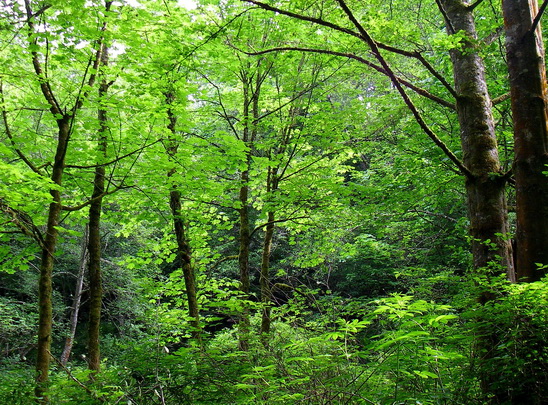I’m thinking of a nice outdoor activity to celebrate tomorrow’s summer solstice — deciding on the trees I’m going to plant in late Fall. With the sun at its zenith, midsummer is the best time to evaluate the solar exposure for each potential planting spot. The number of hours of direct summer sun the young trees receive each day will be a main determinant in whether they survive and thrive.
Too often, I have started with trees in hand, looked for places to plant them and hoped for the best. It has worked better when I started with the planting area and decided what species of trees would grow best there.
I’ve got a general area picked out where I want to plant a half-dozen trees. Tomorrow, I’ll go there and pick out an exact spot for my main tree. This will also be the starting point for determining the location and spacing for a few other trees in this area. Since I’ll be planting a group of trees, I’ll pace off the dimensions and begin a sketch map of the site for reference.
I’ll drive a metal stake up to 18” into the ground to gauge the soil depth and locate any major obstructions, like big rocks or roots, that would require me to pick a slightly different planting spot. Once the specific planting spot is located, I’ll mark it with a sturdy stake that will remain in the ground until the tree is planted. I’ll tie a survey ribbon on it to make it visible and mark the spot on my sketch map.
Then, I will estimate the number of hours of direct, daily, summer sunlight that the new tree will receive by standing above the stake, tracing the expected arc of the sun with my arm, and estimating the number of hours it will be clear from obstructions (about three hours for every 45 degrees). I’ll note this estimate on the sketch map.
Midsummer is also the best time to evaluate the soil moisture, another important factor in selecting a tree in the Puget Lowlands with its long summer drought. Using a hand trowel, I’ll dig a narrow test hole about a foot deep to gauge the moisture, drainage, topsoil depth, mineral particle size, etc.
I’ll decide on the species of tree I think might grow best in the spot and mark it on the ribbon and sketch map. Since I’m planning for a number of trees, I’ll repeat the previous steps for each one, because solar exposure and soil moisture can vary significantly between spots just a few yards apart.
When I’m back at my desk, I’ll finalize the list of trees and add shrubs and herbaceous plants that will make good companions for the trees. I’ll begin to look forward to late October or November when I hope to acquire the trees and plant them, knowing I’ve done my best to ensure that each one will be able to live long and prosper.
